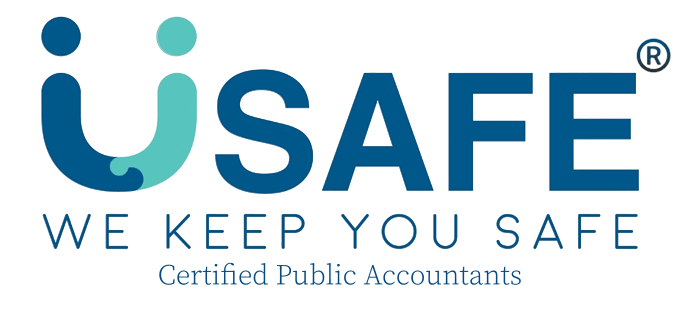IFRS 9 Financial Instruments – Classification, Measurement, and Expected Credit Loss (ECL)
1️⃣ Introduction: Understanding IFRS 9 Financial Instruments
IFRS 9 Financial Instruments provides the framework for classifying, measuring, and impairing financial assets and liabilities.
In Singapore, companies hold trade receivables, loans, investments, and derivatives. Therefore, IFRS 9 Financial Instruments helps entities present these items clearly and recognise risks earlier through the Expected Credit Loss (ECL) model.
This improves transparency and supports consistent reporting across the region.
2️⃣ Purpose and Scope
IFRS 9 applies to all financial assets and financial liabilities, except items covered by other standards such as IFRS 2 or IAS 26.
The standard focuses on three main areas:
-
Classification and measurement
-
Expected Credit Loss (ECL) impairment model
-
Hedge accounting
As a result, companies present financial instruments in a way that reflects both economics and risk.
3️⃣ Classification of Financial Assets
Under IFRS 9 Financial Instruments, financial assets are classified based on:
-
Business model for managing the assets; and
-
Cash flow characteristics (SPPI test — solely payments of principal and interest)
They are classified into:
(a) Amortised Cost
Used when:
-
The asset is held to collect contractual cash flows, and
-
The cash flows meet the SPPI test.
Examples: Loans, trade receivables, most intercompany balances.
(b) Fair Value Through OCI (FVOCI)
Used when:
-
The asset is held both to collect cash flows and to sell, and
-
Cash flows pass the SPPI test.
Examples: Bonds held for liquidity management.
(c) Fair Value Through Profit or Loss (FVTPL)
Used when:
-
The assets fail the SPPI test, or
-
The entity chooses the fair-value option.
Examples: Equity investments, derivative contracts, structured products.
Therefore, classification depends on intention and contractual features, not management preference.
4️⃣ Classification of Financial Liabilities
Financial liabilities are generally measured at:
-
Amortised cost, or
-
FVTPL when designated or when they are derivatives.
Changes in own credit risk for liabilities at FVTPL go to OCI, improving presentation consistency.
5️⃣ Expected Credit Loss (ECL) Impairment Model
One of the most significant parts of IFRS 9 Financial Instruments is the ECL model, which requires companies to recognise credit losses earlier than before.
The model uses three stages:
Stage 1: 12-month ECL
Applied when credit risk has not increased significantly.
Stage 2: Lifetime ECL
Applied when credit risk increases significantly.
Stage 3: Credit-impaired
Applied when the asset is in default.
In addition, IFRS 9 requires entities to incorporate:
-
Forward-looking information
-
Historical default data
-
Current economic conditions
This approach helps companies report risk more accurately.
6️⃣ Simplified Approach for Trade Receivables
For trade receivables, contract assets, and lease receivables, companies use the simplified approach, recognising lifetime ECL immediately.
This method avoids tracking credit-risk staging.
Therefore, SMEs and accounting firms often find it easier to apply compared to full ECL models.
IAS 37 Provisions, Contingent Liabilities and Contingent Assets
7️⃣ Hedge Accounting Under IFRS 9
IFRS 9 Financial Instruments allows hedge accounting for:
-
Fair value hedges
-
Cash flow hedges
-
Net investment hedges
Qualifying requires:
-
Formal documentation
-
Clear risk-management objectives
-
Ongoing effectiveness assessments
As a result, hedge accounting reflects economic hedging more closely.
8️⃣ Example: IFRS 9 in Practice
Scenario:
uSafe Accounting Pte. Ltd. has the following financial instruments:
-
SGD 350,000 in trade receivables
-
USD bank balances
-
An interest-rate swap
-
A corporate bond investment
Under IFRS 9 Financial Instruments, uSafe must:
-
Apply the simplified approach for receivables using lifetime ECL
-
Revalue the bond at FVOCI
-
Measure the swap at FVTPL
-
Provide sensitivity analyses for FX exposures
Consequently, financial statements show both credit risk and market risk clearly.
9️⃣ Common Errors
-
Using incurred-loss instead of ECL model
-
Ignoring forward-looking data in ECL calculations
-
Applying SPPI test incorrectly
-
Misclassifying equity investments
-
Omitting credit-risk disclosures under IFRS 7
Avoiding these mistakes improves audit readiness and reduces FRSP findings by ACRA.
🔟 Best Practices
To apply IFRS 9 effectively:
✅ Maintain updated default-rate matrices
✅ Use macroeconomic overlays for ECL
✅ Document SPPI assessments for each instrument
✅ Train finance teams on lifetime ECL logic
✅ Align IFRS 9 disclosures with IFRS 7 requirements
In addition, companies should review classification annually to reflect any business-model changes.
Conclusion
IFRS 9 Financial Instruments strengthens financial reporting by ensuring earlier recognition of credit losses and clearer classification of financial assets and liabilities.
Therefore, applying IFRS 9 helps Singapore companies improve transparency, risk management, and compliance with ACRA’s expectations for high-quality financial statements.
Disclaimer: This article is for informational purposes only and does not constitute any professional advice. Feel free to contact us to consult with our professional advisors team for personalized advice and guidance.
Sources: https://www.ifrs.org/issued-standards/list-of-standards/ifrs-9-financial-instruments/




